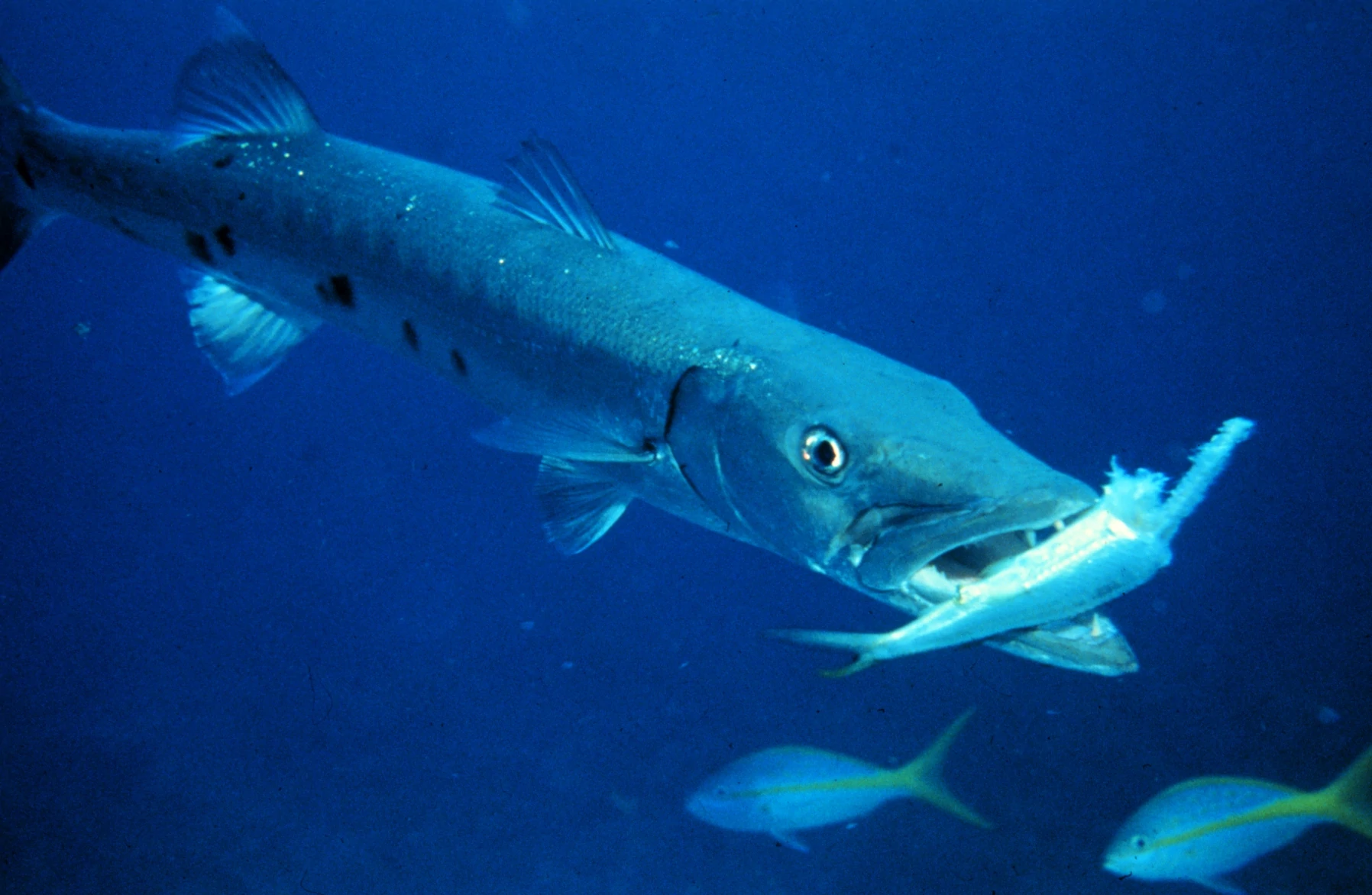The Southern Sennet has a range from Florida to Louisiana. As you can probably see the Southern Sennet is closely related to the Great Barracuda yet is considerably smaller.
The Southern Sennet is a predatory fish that feeds on fish, shrimp, and squid. Good to eat though not commonly caught for commercial purposes.
Habitat and Distribution
Habitat
- Coastal waters
- Reefs
- Muddy bottoms
Geographical Range
- Bermuda
- Florida
- Bahamas
- South to Uruguay
The Southern Sennet prefers coastal waters and often resides near reefs and muddy bottoms. Juveniles commonly live in seagrass beds, where they find protection and food. The fish can be found in depths ranging from 1 to 65 meters.
Physical Characteristics
Body Structure
- Elongated body
- Pike-like head
- Large jaws with fang-like teeth
Fins
- Two dorsal fins
- Anterior fin with spines
- Posterior fin with rays
Size
- Maximum length: 61 cm (24 inches)
- Common length: 36 cm (14 inches)
- Maximum weight: 1.1 kg (2.4 lbs)
Southern Sennet has an elongated body and a pike-like head. Its large jaws contain fang-like teeth. The fish has two dorsal fins, the anterior fin with spines and the posterior fin with rays. This species can reach up to 61 cm in length and weigh up to 1.1 kg.
Diet and Feeding Habits
Diet
- Smaller fish
- Shrimp
- Squid
Southern Sennet is a predatory fish. It feeds on smaller fish, shrimp, and squid. It often forms large schools and hunts near the surface.
Human Interaction and Uses
Fishing
- Marketed fresh or frozen
- Minor commercial importance
- Game fish
Health Concerns
- Ciguatera poisoning
Southern Sennet is sometimes marketed as fresh or frozen. It holds minor commercial importance but is also valued as a game fish. Despite being generally safe, it has been linked to ciguatera poisoning, a foodborne illness caused by toxins in fish.
Reproduction and Life Cycle
- Oviparous (egg-laying)
Southern Sennet reproduces by laying eggs. Little is known about its specific mating behavior and lifecycle, but it follows the typical patterns of other barracuda. The Southern Sennet typically lives up to 5 years in the wild.
Conservation Status
Threat Level
- Not evaluated by the IUCN
The conservation status of the Southern Sennet has not been evaluated by the International Union for Conservation of Nature (IUCN). There are no significant threats currently identified for this species.
Final Thoughts
The Southern Sennet fish is often targeted by local anglers looking for a sporting challenge, though it does not usually end up on dinner tables in large numbers. While this species contributes little to commercial fishing, recreational fishermen still enjoy their efforts to catch these elongated predators with sharp teeth.
When handled correctly after the catch, the fish is generally safe for human consumption. However, occasional reports have linked larger individuals to a toxin that can cause illness in some. In the end, though the Southern Sennet plays a minor role in our region’s fishing industry, it remains a worthy quarry that tests the skills of amateur anglers willing to do battle on hook and line.

